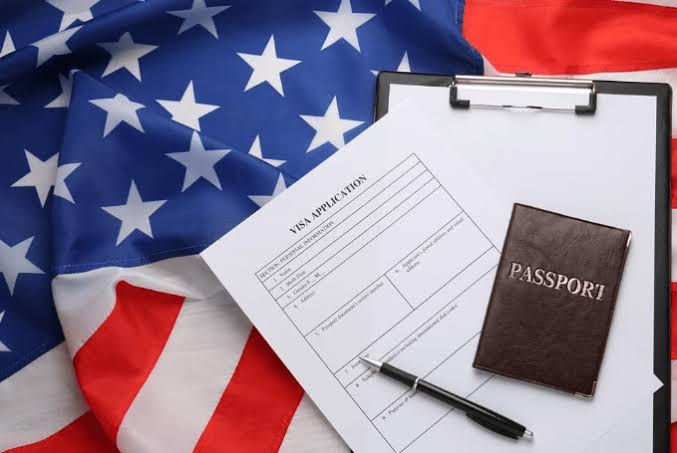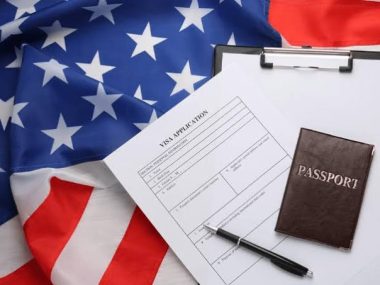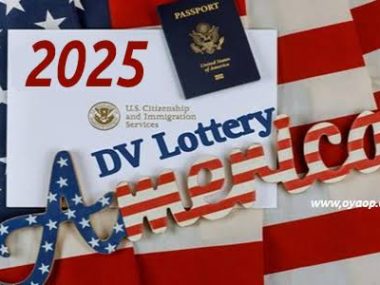How to Secure High-Paying US Jobs with Visa Sponsorship in 2025 – Your Ultimate Guide
Introduction: Navigating the Path to a US Job with Visa Sponsorship
The journey to securing a high-paying job in the United States, especially with visa sponsorship, can be both rewarding and challenging. In 2025, the demand for global talent is at an all-time high, and U.S. corporations are offering competitive compensation packages for skilled professionals. This comprehensive guide will walk you through every step, from identifying top roles in the U.S. job market to understanding visa sponsorship options, all while ensuring you have the resources to succeed.
- Why the US is a Top Destination for Global Talent
Description: The U.S. has long been a hub for global talent, offering unparalleled job opportunities across various industries. In 2026, sectors such as technology, healthcare, finance, and engineering are booming, with companies looking for skilled workers who can drive innovation and growth.
Analysis: U.S. companies are particularly focused on attracting professionals with expertise in cutting-edge technologies, such as data science, artificial intelligence, cloud computing, and cybersecurity. These roles not only promise high salaries but also offer significant career development opportunities.
Evaluation: Understanding the factors that make the U.S. attractive will help you tailor your job search and leverage visa sponsorship opportunities effectively. What if the demand shifts to other emerging economies in the next few years?
- The Different Types of US Work Visas and Their Benefits
Description: When applying for a job in the U.S., understanding the visa options available is crucial. The most common visa for professionals is the H-1B, but there are others, including L-1, O-1, and TN visas.
Analysis: Each visa type has its eligibility requirements, application processes, and benefits. The H-1B visa, for example, allows U.S. employers to sponsor foreign workers in specialized fields. It also serves as a stepping stone for permanent residency (Green Card) through the PERM labor certification process.
Evaluation: Is the H-1B the best option for you, or could another visa, such as the L-1 for intra-company transfers, be more suitable depending on your career stage and the companies you’re targeting?
- High-Paying Sectors for Visa Sponsorship in 2025
Description: Certain industries in the U.S. are more likely to offer visa sponsorship and pay lucrative salaries. Tech, healthcare, finance, and engineering sectors consistently offer high-paying roles.
Analysis: Companies in these industries are not just looking for technical expertise but are also offering robust benefits, performance bonuses, and stock options. Roles like Data Engineers, Cloud Security Engineers, and Robotics Engineers often earn base salaries ranging from $120,000 to $200,000+, along with additional bonuses and equity.
Evaluation: How do these salary ranges compare to those in your home country? What if other countries start offering similar packages to attract foreign talent?
- How to Find US Companies Offering Visa Sponsorship
Description: The key to securing a U.S. job with visa sponsorship lies in targeting the right companies that are known to sponsor foreign workers.
Analysis: Large corporations, especially in tech, finance, and healthcare, have a proven track record of sponsoring H-1B and other work visas. Companies such as Google, Facebook, Amazon, and Microsoft are regular H-1B sponsors, as are healthcare institutions like Mayo Clinic and Cleveland Clinic.
Evaluation: What if smaller companies or startups are more flexible in offering visa sponsorship and may present less competition? How do you find these opportunities?
- Crafting the Perfect Resume for US Employers
Description: Your resume is your ticket to the job market. In the U.S., a professional resume needs to meet specific standards to pass through applicant tracking systems (ATS).
Analysis: Tailor your resume to highlight your skills, accomplishments, and expertise. Use the “XYZ” formula for impact-oriented bullet points and ensure your resume is optimized with relevant keywords from the job description. This will increase your chances of passing ATS filters.
Evaluation: What if your resume doesn’t align with U.S. job market expectations? How can you adjust it to ensure it stands out to American employers?
- Networking and Building Connections for Job Opportunities
Description: Networking plays a critical role in securing high-paying jobs in the U.S. Leveraging platforms like LinkedIn and attending virtual or in-person job fairs is essential for building professional relationships.
Analysis: By connecting with recruiters, hiring managers, or professionals in your field, you can gain insight into the job market and get referrals for visa sponsorship opportunities. Networking also opens doors to mentorship, which can accelerate your job search.
Evaluation: What if you’re not well-versed in networking? How can you build a professional network effectively, especially in a foreign market?
- The Visa Application Process: What You Need to Know
Description: Once you’ve secured a job offer, the visa application process begins. This includes filing petitions, attending interviews, and providing supporting documents such as proof of education and work experience.
Analysis: U.S. employers typically handle much of the visa paperwork, but you need to ensure that you provide all necessary documents and information to avoid delays or complications. The timeline for visa approval can vary, so it’s crucial to plan accordingly.
Evaluation: What if the visa application is delayed? How can you prepare for this and manage your expectations during the waiting period?
- Navigating the Interview Process for Visa-Sponsored Roles
Description: The interview process for U.S. jobs is highly competitive. Employers not only want to assess your technical skills but also your ability to fit into their corporate culture.
Analysis: Research the company thoroughly, practice common interview questions, and be ready to demonstrate your expertise in relevant tools and technologies. Behavioral interview questions are common, so preparing STAR (Situation, Task, Action, Result) responses is key.
Evaluation: What if you’re unfamiliar with U.S. interview culture? How can you prepare yourself to stand out from the competition?
- Relocation and Settling in the U.S.: What to Expect
Description: Once you receive your visa, the relocation process begins. U.S. companies often offer relocation packages to help ease your transition.
Analysis: These packages can include everything from business-class airfare for you and your family to temporary housing, settling-in allowances, and car down payments. It’s important to understand the full scope of what is included in your relocation package.
Evaluation: What if your relocation package doesn’t cover all expenses? How can you plan financially for your move?
- Achieving Long-Term Success and Green Card Sponsorship
Description: Your H-1B visa is just the beginning. Many professionals transition to permanent residency (Green Card) through employer sponsorship after a few years of work.
Analysis: The process for obtaining a Green Card can take several years, but it is the ultimate goal for many professionals. Understanding the PERM process and working closely with your employer’s legal team can make this transition smoother.
Evaluation: What if the Green Card process is delayed? How can you manage this uncertainty while planning for long-term success?
Conclusion: Seize the Opportunity – Your Pathway to a High-Paying US Job with Visa Sponsorship
Securing a high-paying job in the U.S. with visa sponsorship in 2026 is within your reach. By following the strategies outlined in this guide, you can position yourself as a top candidate and access incredible opportunities that provide not only financial rewards but also a clear pathway to permanent residency and citizenship. The key to success is preparation, persistence, and leveraging the right resources to achieve your American dream.


